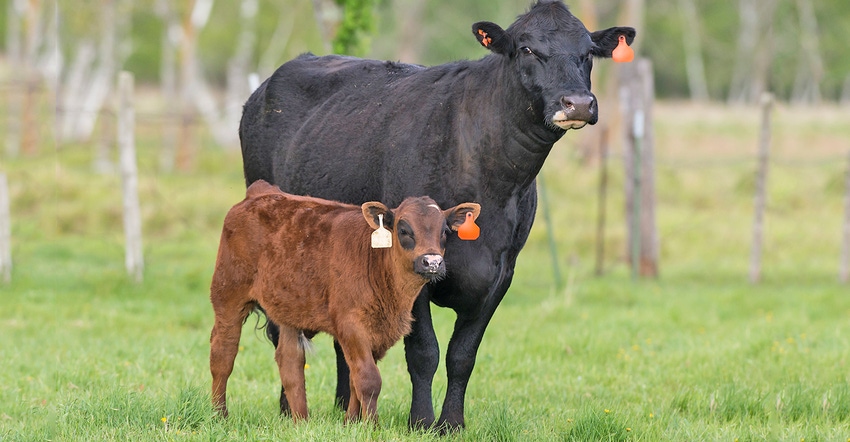February 26, 2018

By Bill Halfman
Body condition scoring continues to be an important and useful management tool for cow-calf producers. Unfortunately, it is often forgotten. The current method of evaluating body condition involves visually evaluating the animal and assigning a body condition score, or BCS, that reflects the animal’s current state of condition. It can be used as a reliable indicator of a cow’s nutritional status, and should be used as an aid when making certain management decisions.
It is important that body condition be evaluated at times during the year that provide the opportunity for any changes to be beneficial. In an ideal situation, body condition is evaluated continuously throughout the year. However, changing the nutritional status of an animal, at least to the extent that the change is visually evident, generally takes extended periods of time — most often months.
The two times during the year to evaluate body condition that fit best in most management programs are the spring and fall. This is because for most operations with a defined calving season, either cows are calving or calves are being weaned during these two seasons. Evaluating body condition around the time of these two events (calving and weaning) allows you to make management decisions that will hopefully optimize that animal’s productivity. It also allows you to evaluate, and adjust management in the future.
At calving, the ideal BCS of a mature cow is 5 to 6. It generally takes at least a 5 for the cow to reproduce successfully once per year. Cows that calve while below a 5 usually require extended periods of time to begin cycling again, which often places them outside the window of rebreeding within the 82 or so days necessary to calve once every calendar year (assuming a 283-day gestation length).
Don’t overcondition
Overconditioning — scores higher than 6 — results in higher costs of production. An excessively high BCS score of greater than 7 also often leads to health problems for the cow. There are herds out there that would improve their profits by not continuing to overcondition cows.
Replacement heifers should be managed to calve at one-half to one full BCS higher than the mature cow herd. This acts as a form of insurance for their fertility, and eases their transition into the normal rotation in the cow herd.
I like to see second-calf heifers calve at a 6, and I know this is tough to achieve if they are just in with the rest of the herd, as these females are still growing and require roughly 10% to 15% more energy and protein than the mature cow herd. Ideally, this group should be managed separate from the mature cow herd prior to calving. Once they have their second calf, they should be able to be managed with the mature herd if they are going to be profitable cows in the operation.
At weaning, the ideal BCS for each category is much more difficult to define. Managing mature cows and first-calf heifers to maintain a BCS of at least a 4 at weaning generally yields good results for most producers. That means she had enough condition to prevent nutritional stress from causing abortion, and there is enough time remaining prior to calving that her condition can be increased. However, maintaining that level of condition through weaning can be difficult for first-calf heifers — particularly those with a high level of milk production, and especially if the first-calf heifers are managed with the remainder of the herd. After weaning, first-calf heifers should be managed separately and under a higher plane of nutrition than the mature cows to minimize the negative consequences of undernutrition, because they are still growing themselves.
Body condition scoring is a valuable tool, but is only as valuable as you make use of it. Knowing the BCS of a group of females doesn’t provide any benefit if you don’t do anything with the information. The value of evaluating body condition lies in using that information to make management decisions.
Halfman is the Extension ag educator in Monroe County, Wis. This column is provided by the University of Wisconsin Extension’s Wisconsin Beef Information Center. Learn more at fyi.uwex.edu/wbic.
You May Also Like




